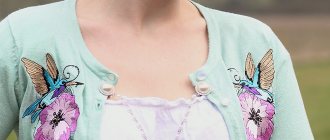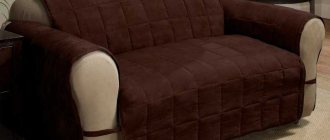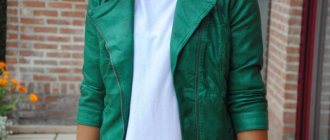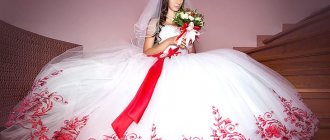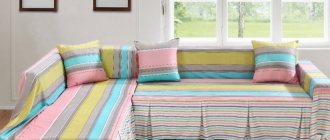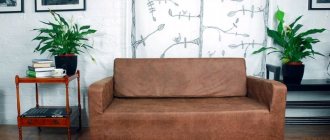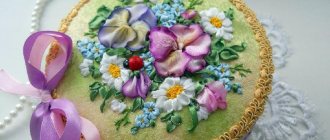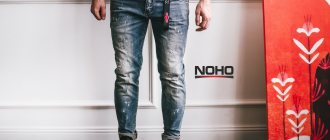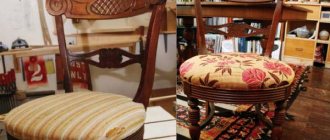What are chair covers
Chair covers are nothing more than clothing for furniture. Their importance is very difficult to underestimate. They will help hide minor defects and decorate even the oldest ordinary chair.
It is impossible to say for sure what the covers were originally intended for. They were decorations or served a protective function. However, even in the times of kings and dukes one can notice the use of this attribute.
At that distant time, it was believed that the combination of burgundy and gold was the height of beauty and solemnity. Often in palaces one could see velvet curtains in tandem with the same capes. They decorated ceremonial halls and no one even thought of considering them impractical.
Times have changed, and so has the material. Expensive natural materials were replaced by budget artificial analogues. But this did not detract from the advantages or affect the beauty and functions of the products.
Currently, you can find a huge variety of chair covers (photo below), made in different styles and using both simple and complex techniques.
Choosing fabric for sewing chair covers
Not every material is suitable for sewing a future table cover. And all because it must be dense, high-quality, pleasant to the touch and, most importantly, visually attractive.
Green cover for children's chair
Several options for the most current fabric for sewing covers:
- Crepe satin. A rather elegant variation of the fabric, with the help of which such impressive-looking folds and gathers are created. The refined appearance of the future case is guaranteed.
- Gabardine. The canvas has good elasticity and density, although the material itself is quite thin to the touch.
- Supplex/Lycra. Very dense and elastic fabric, stretches perfectly in all directions.
A little secret for housewives! To harmoniously complement the chair covers in the interior, you will need tablecloths and curtains that match the color and decor.
Gray elastic chair cover
Chair covers in a classic interior
Beautiful soft covers for chairs
White chair seat covers
White covers for dining chairs
Floral covers for dining chairs
Gray covers for dining chairs
Leather covers for dining chairs
Red velvet chair cover
Beige stylish chair cover
Characteristic
Chairs are an integral part of any interior. It is no secret that over time their surface may wear out, scratches will appear on it, and the appearance will not be so presentable. What to do in this case? I don’t want to leave the chair in this state, but it’s a shame to throw it away. In this case, covers will come to the rescue.
Functions
They perform the following functions:
- Decorative;
- Protective.
Sometimes it is extremely important to create a certain color scheme in a room or stick to one style. This is necessary, for example, for weddings, banquets and celebrations. It is not economically profitable to buy chairs made in different techniques, and standard ones will be too simple and inconspicuous. It is for such situations that chair covers were invented. They are like jewelry for a person, which can make even the most banal turtleneck festive and memorable. To do this, you need a basic thing (in this case, a chair or armchair) and a little imagination.
The protective function of these products is no less relevant and important. A well-chosen fabric will help extend the life of your furniture. The cape will protect the surface from animals, direct sunlight and other factors that negatively affect the condition of the piece of furniture.
Decorative elements
Decor is an important component of any product. It helps to fit it into the overall interior or create an accent. Most often, the following “highlights” are used in the manufacture of furniture covers:
- Combination of diverse fabrics;
- Braid;
- Lace;
- Embroidery;
- shuttlecocks,
- Decorative buttons and locks;
- Buttons;
- Bows.
The combination of different fabrics, as well as the color scheme, even without any additional elements, allows you to create a bright image. Its texture is of great importance.
What material to choose for chair covers
Sometimes it is important to choose similar ones, and in other cases it is the incompatibility that gives the “zest”. Of course, you need to know the measure, and also evaluate not only the external compatibility, but also the thickness of the fabric. For example, chiffon in combination with felt or even corduroy is unacceptable. The first one in this case can be “carried out” with the second layer, but not with the main one. Due to the characteristics of the connection, density and tension, such a product will not have a long service life. Such an experiment will most likely fail!
- Playing with color can also replace additional decor. You can choose a solution for individual parts or create a combination at the stage of painting the finished product. Colored spots will be appropriate in a relaxed home environment. For special occasions, such a design would not be entirely appropriate. The exception is cases where such design decisions are dictated by the specifics and theme of the celebration.
- The braid can be either discreet and matching the color scheme of the main fabric, or stand out against its background. Back in the Middle Ages in Italy, this accessory was actively used to decorate the backs of chairs and curtains. Braid helps instantly transform things. It can be made in gold and silver shades from coarse fibers. Light and weightless strips are often used. They will easily fit into the delicate image of a cover or add softness to a rough canvas.
- Lace in the design of capes for chairs and armchairs is best used as an additional layer. You can use it in the form of a canvas or add small “islands”. Lace can be made from both natural and synthetic materials. This is not a very practical material, so it is better to use it on the side that is not in direct contact with the person. You can make lush flowers or flounces from lace.
- Embroidery always stands out effectively among other decorative elements. Such products are imbued with the warmth of the hearth. It is important to remember that if you embroider a pattern on covers yourself, you need to check the threads to see if they are fading or not. If you neglect such a test before work, you can get unpleasant consequences when washing the product.
- A “skirt” made of flounces on covers for armchairs and chairs looks very impressive. It may match the color and texture of the main fabric, but it may also differ from it. The flounces can be sewn onto the back of the product or placed along the edges. Depending on the overall concept, they can be made of either light or rigid fabric.
- You can often see panels of buttons, snaps and clasps on decorative pillows. The same principle applies to the design of the outside of the back of the covers. You can use any type of button for this. They can be plastic and metal, large and small. You can make unique paths or flowers from castles. Rivets can also serve both for their intended purpose and as decoration.
- Bows are frequent companions in the design of chairs for a living room or a celebration hall. With their help you can secure the product or give it a unique charm. They can be made of satin ribbons or ordinary fabric, and can be simple or complex. By using different colors for one base, you will achieve different moods and effects.
- To create a voluminous cape, fillers are used. In most cases, they are made of artificial fibers. It can be holofiber or padding polyester. With their help you can make a soft seat or backrest. This thin insulation also makes the stitching stand out.
What should a chair cover be like?
Sewing furniture covers helps solve functional, protective and aesthetic problems when decorating premises. Covers on the seat or back of furniture should be easy to use, easy to clean, and maintain an aesthetic appearance. Thanks to the special properties of the textile, the covers do not fade and are not deformed for a long time.
Capes must be selected in accordance with the interior features of the room and the wishes of the customer. The models are intended for everyday use or creating a festive atmosphere. Accessories are selected in accordance with the season.
Products differ in purpose, shape, dimensions, and materials. You can choose capes for chair models of strict classic or original complex configurations.
The styles of the covers also differ. Products are divided into 3 groups: one-piece cut, separate (for the back and seat), as well as models that cover only the back of the chair. One-piece covers are universal. Separate models (for the seat and the vertical surface of the chair) are optimal in summer kitchens and garden gazebos. The shape of the seat covers is intended to decorate furniture and is complemented by ribbons for fastening.
Capes are divided into types according to the type of room and are used in the design of children's rooms, bedrooms, living rooms, etc. You can sew the covers yourself or purchase ready-made ones.
Everyday and holiday
Depending on the needs and tasks to be solved, there are chair covers for holiday celebrations and for everyday use.
For daily use, you need universal models without additional parts, made from simple materials. The products will need to be washed frequently, so high-quality tailoring is required, with carefully processed seams. Models should only be practical, with a functional cut. The fabric for sewing needs to be aesthetic and wear-resistant.
Cotton materials are optimal for daily use in Provence, rustic, etc. style interiors. The country design will be complemented by striped fabric capes decorated with buttons. Casual models are often secured with zippers sewn into the sides.
The most beautiful covers are festive ones. With the help of elegant models, rooms are decorated for special occasions. The products are complemented with decorative elements - frills, bows, embroidery.
Organza models are suitable for wedding celebrations - luxurious and delicate. New Year's covers are complemented with draperies and decorated with brooches, ribbons and rhinestones.
For kitchen
When sewing covers for kitchen chairs, it is better to select wear-resistant materials. Cotton fabrics or compositions made from a mixture of viscose and cotton are optimal. Requirements for materials: ease of ironing, resistance to frequent washing, no snags during use. The color scheme of the products is selected to match the interior of the kitchen. Covers that match the color of the tablecloth, potholders or curtains look advantageous.
Chair covers in the kitchen space require smaller sizes than holiday models. Functional products do not require expensive finishing. Ergonomics and practicality are important. A simplified version of the cover modified with an elastic band is common; models may vary depending on the size of the seat.
Covers for chairs with backs with rounded corners and Viennese-shaped (rounded) seats must be tailored exactly to the product. It is recommended to sew kitchen accessories from practical, wear-resistant fabrics (microfiber, supplex, etc.).
To the living room
Models of capes for the living room are made in a simple style. It is recommended to sew a cover for a chair with a back from durable and aesthetic furniture fabrics. Models in the same style look harmonious with the colors and textures of curtains, upholstered furniture and other room accessories. Recommended materials: gabardine, spandex, jersey, microfiber. The fabrics are easy to care for, aesthetically pleasing, and reliable in use.
For a classic interior you will need formal capes in pastel colors. In spacious living rooms, which are also used as banquet rooms, covers should emphasize the sophistication of the atmosphere. For models, choose stretch satin, brocade, jacquard, organza, microfiber with glitter, etc. Covers for banquet chairs are decorated with decorative elements (bows, frills) and complex draperies.
To the nursery
A chair cover for a children's room allows you to embody original design ideas. The decoration uses fur and knitted inserts, appliqués, embroidery, etc. Comfortable cotton materials and fleece are suitable for covers. Denim fabric is also used in decoration, from which you can make original covers with pockets.
For a children's room, models of square and round shapes are suitable, which are attached to the legs of the furniture with ties. A modified version of the cape in the form of a “tablet” allows you to securely fix the canvas to the seat using an elastic band.
Covers for school chairs should be of standard shapes and strict colors. Practical and wear-resistant materials are optimal for the models: microfiber, jersey, gabardine and spandex.
Knitted patterns
Crocheted covers for armchairs and chairs will help create a warm and cozy atmosphere in the room. Large and voluminous patterns with imitation lace or embossed upholstery look especially advantageous. The optimal color scheme for knitted products is natural, pastel tones or rich colors.
You can knit covers with knitting needles using the techniques of purl or stockinette stitch, cross rib, make braid patterns, etc. The yarn for the seat cover should match the texture and color of the interior.
Manufacturing
Read about: covers for a corner sofa - a universal cover for furniture
Furniture covers have gained unprecedented popularity in recent years. However, there are not many companies engaged in streaming production in the textile market. In this regard, enterprising housewives independently come up with and implement their ideas for improving the space. Let's talk about what fabrics are best to use to create furniture covers.
The main criteria by which sewing material is selected:
- The fabric should not have a high degree of shrinkage. To prevent this, it is better to always follow the rules for caring for this type of fabric;
- Choose a material that is easy to wash and iron. Of course, you always want your home to be perfect and the interior luxurious. However, you should not choose options that wrinkle a lot (for example, pure linen and viscose) or capricious fabrics (for example, silk). They require appropriate care, but are you able and financially able to afford it? Always soberly assess your abilities. It is better to choose a similar option made from artificial fibers than to worry that the product will quickly lose its “marketable” appearance;
- Do not use fabrics that are poorly breathable. In this case, the body will sweat excessively. Therefore, 100% polyester is excluded.
- If you want to make thick and practical capes, then you can choose flock. This thick fabric for chair covers can imitate many textures: leather, suede, velvet, chenille. In this case, you get a noble-looking material, while not paying so much money for it. Flock is created using a non-woven method. Particles are applied to the surface electrostatically, which form a certain “pattern”. Depending on the technology, different surface textures are obtained. Flock consists of cotton and polyester. Moreover, the base is usually natural fiber, and the pile is artificial.
However, covers are often matched to curtains. In this case, they can be sewn from the same material. It could be:
- Linen with the addition of synthetic fibers. This combination allows you to increase the performance characteristics of the product, including reducing the degree of creasing;
- Atlas. Thanks to the shine, such products turn out to be very bright and solemn. Using only color combinations or adding decorative braid, you will already have an interesting option;
- Bamboo. Bamboo fiber is easy to care for and has bactericidal properties. It has a pleasant greenish tint in its “virgin” state and is easy to paint. You can't go wrong with any of these options;
- Jacquard. Since it is better to use dense materials for sewing, this option is perfect. In addition, it is also distinguished by its elegant design. It may be a complex ornament or curls, but in any case they will make the design luxurious.
Whatever material you choose, if the product is made with soul, it will take its rightful place in your interior and will give only positive emotions.
Master class on sewing a cover
The complexity of sewing capes is determined by the configuration of the chair and the style of the model. It's better to start with a simple model and inexpensive fabric.
Before you sew chair covers with your own hands, you will need to accurately measure the dimensions of the furniture. It is important to calculate the narrow and wide areas, prepare a diagram and mark the fastening locations on the drawing. The pattern must be drawn up taking into account the shrinkage of the material and seam allowances.
When choosing a style, the purpose of the accessories (everyday or festive) is taken into account, as well as the interior design.
We take measurements
To sew chair covers, you will need careful measurements and calculations of the elements. There are different types of capes, so before making patterns for chairs, you need to determine the version of the product. Models can completely cover the chair, or be intended only for the seat or back.
In accordance with the style, the distance from the top of the furniture to the floor surface, the height of the back of the chair, the depth of the seat, and the width of the product are determined. When taking measurements, it is necessary to take into account the shape and size of the chair legs, because in some models there is an expansion of the supports towards the bottom.
We are building a drawing
To create a pattern for a chair cover with a back, you will need to draw up a schematic drawing. The standard model has several basic elements: a rectangle for the back, a canvas for decorating the seat and legs, as well as 2 side parts.
To the width of the main rectangle, which should correspond to the parameters of the chair, you need to add 2 cm on each side. When calculating the length of the rectangle, the height of the backrest from the floor, the distance from the top of the chair to the seat, the depth of the seat and the height of the legs are taken into account. The drawing requires marking the narrowest and widest sections of the product.
To create an accurate pattern, paper is applied to the back and seat, and the contours are outlined with a pencil. The parts are cut out with stationery scissors. The paper pattern must be adjusted to size by applying it to parts of the furniture. The resulting patterns are used as a basis for constructing other elements of the case. Some parts are cut out using calculations.
The finished templates must be attached to a new sheet of paper and circled. Then you need to add seam allowances to the pattern. To process the cutting lines of the fabric you will need an additional 2-2.5 cm.
Transferring the pattern to fabric
The cover patterns must be carefully transferred to the fabric. The finished elements of the drawing are cut out of paper and applied to the fabric. Experts recommend taking into account the location of the grain threads on the fabric to avoid distortions in the finished cape.
Then we cut out the product along the fractional lines. The work uses chalk, soap or pencil. The sides of the patterns should be straight, so you will need a measuring ruler to make straight lines.
Simple models can be cut out from the fabric, taking into account these patterns, without drawing up a paper template and trying it on furniture.
Advantages and disadvantages
The disadvantages of covers will relate only to the characteristics of the fabrics and their difficulty in care. In this case, it’s better to focus on the advantages:
- Perfectly refreshes the atmosphere;
- Give a second life to old furniture;
- Protect from animals and negative external factors;
- By changing the covers you can “adjust” the mood in the room.
By making covers and capes yourself, you adjust the “rhythm of the house” to a positive wave. When modified, it will give you health and good mood.
Types of cases
Before you start taking measurements, creating patterns and sewing chair covers with your own hands, you need to decide what type they will be.
For example, universal covers have special adjusting cords. Due to this feature and the absence of armrests, they are suitable for all types and sizes of chairs.
There are also luxury covers for DIY chairs with backrests and stools. These options are very expensive and are made exclusively from expensive, high-quality materials.Such species necessarily have expensive decorations in the form of expensive lace ribbons, fresh flowers and other things. They are sewn specifically for a specific chair model and are most often used for any events.
There are also models called half-covers due to the peculiarities of their use on a chair. They may have parts to cover the seat or just the back.
Elastic bands, ropes or ribbons are used for fixation, with which they are tied to the chair.
Note!
How to make flowers from cold porcelain: chic floristry and DIY crafts for the New Year step by step
How to make cold porcelain from potato, corn starch, liquid, without soda. Recipes and cooking methods
How to properly make a birdhouse with your own hands from scrap materials: we create an original birdhouse according to sketches
There may be models for the entire chair, but they are most often separate and do not cover the entire surface. A DIY cover for the back of a chair will help hide the unattractive parts of it.
Product care
The rules for caring for products primarily depend on the fabric from which it is made. Here are some general points that will help keep the covers in a “fresh” condition for a long time:
- If there are decorative elements that can be removed before washing, it is better to do so;
- It is better to wash such products by hand. If it is not replete with complex decor, delicate machine wash is also applicable;
- Products with embroidery are ironed only on the inside;
- If a stain appears on the surface, it should be removed as quickly as possible. This will help prevent damage to the product;
- You should periodically knock out the covers and take them out into the fresh air;
- Do not allow direct rays to constantly hit the surface. This may cause the fabric to turn yellow or fade.
Everyone wants to make the interior of their home unique and memorable. Style is always created by details. Don't be afraid to show your imagination and bring your ideas to life.
And a few more photos of chair covers, ideas for making which you can use in decorating your furniture.
© 2021 textiletrend.ru
For sofas
Any interior contains upholstered furniture. To decorate it, use beautiful bedspreads or decorative pillows, which create comfortable conditions for lying on the sofa and decorate the room. They really work wonders and create a relaxed atmosphere. Especially if they are thought out to the smallest detail and made from natural fabrics, like Ikea models.
- ONSKEDROM. The pillow measures 30x60 cm. Its main tone is black; against its background there are stripes of different colors, reminiscent of matches with white heads. It is sewn from natural material, filled with polyester fiber, which can take any shape and provide comfortable rest.
- STOCKHOLM. Square pillows with side dimensions of 55 cm. Their unobtrusive stripes, circles and squares, made in very interesting color combinations, will fill the missing accents in the room. They are notable for the fact that they are made of natural fabric, under which 100% duck feather is hidden.
- OKERGILLEN. It's a cover, but what's amazing about it is that its natural material can be recycled into cotton. It is made with a zipper and is suitable for pillows with dimensions of 50x50 cm. Made in large stripes of white and black, it will fit perfectly into the Greek style of the room.
- KRONERT. The pillow is made of natural material filled with polyester fiber. Available in one orange-red color. Square shape with a side of 40 cm. It can be machine washed. Seat cushions are an irreplaceable thing, but if your kitchen is combined with a dining room or living room, you can use chair covers. They do not have to be to the floor; you can choose floor covers or models made only for sitting. The latter can also be used for small kitchens in apartments. All these and many other models are offered by Ikea.
What kind of material is neoprene?
Features of Casanova textiles in unusual colors.
Photo of holofiber material: which is warmer, padding polyester or holofiber.
Decorating the interior of an apartment, or how to choose chair covers for different rooms
Chair covers have long ceased to be a decoration for dining rooms or living rooms. They are widely used to decorate children's rooms and even offices. The only thing to remember is the uniform style of the room.
What fabric is suitable for kitchen chair covers?
The main rule is that the fabric you choose should wash well, not absorb odors, be wear-resistant and withstand frequent washing.
Important! Choose paid fabrics that do not absorb moisture. It will be possible to remove dirt from such coatings with a regular damp cloth.
Removable covers can be a practical solution in the kitchen. They are easier to quickly replace and wash if necessary.
For kitchen seats, covers with soft filling, for example, a thin layer of padding polyester, are often used. It creates a great shape, however, it is better to provide such a pillow with a removable cover.
Transforming the living room interior
Chairs with covers look great in the living room. They will emphasize the overall style of the room. At the same time, it is not necessary to create multi-layered capes; in some cases, it is enough just to find your highlight.
A simple and practical solution for the living room - removable covers in a classic style
The material used is fabrics such as drape, tapestry, velor or suede. For a dacha or summer veranda, you can use light capes made of linen and cotton.
We maintain business style in the office
For an office, swivel chairs are most often used. Unfortunately, they are short-lived and lose their original appearance.
Sometimes simple solutions will do - brilliant!
You can use zippers, Velcro or invisible hooks as fastenings. No ribbons or bows!
Chair covers for little ones
But here it is better not to restrain your imagination. A children's room is exactly the place where there is scope for non-standard ideas. The fabric for the children's room should be selected taking into account the child's preferences and with an unchanged approach to his safety. The child should not get tangled in the bows or get caught in the Velcro.
A great idea is to attach an applique or soft toy to the case. In this case, rest assured, no one except the child will use this chair!
However, for the sake of functionality, we must not forget about the strength and safety of the case. Check all fastenings or elements in advance, make sure that the baby does not put the cover on his head and is not suffocated by the strings. It is better that Velcro act as fastenings, rather than buttons or ribbons.
The main nuances of choosing wedding chair covers
As we noted above, a wedding is a special celebration. That is why wedding covers are always an element of fairy tale, innocence, simplicity and grace.
Sometimes capes are decorated with additional inscriptions or monograms, emphasizing the new status of the bride and groom
How can you quickly update the interior of a kitchen or dining room without repairing or replacing unsightly-looking furniture? There is an interesting and low-cost option - sewing chair covers from fabric. With their help, you can easily create a sophisticated and cozy atmosphere in your home.
The kitchen is one of the most favorite rooms in the house. Housewives who love to cook and simply cannot imagine their life without a kitchen are ready to “register” here. And men who love to eat delicious food are also not against this option. The above may sound slightly ironic, but in fact there is some truth in every joke.
Covers for kitchen chairs with backrest, photo
And they love the kitchen because you can always eat delicious food there. How about eating like a holiday? and gave pleasure, they create a favorable interior in the room, selecting the best and the latest fashion trends.
In the kitchen, of course, you can’t do without decor. A well-decorated and served table will only help with this. But, as practice shows, the kitchen is a place where something will always be spilled, and by chance something will fall somewhere and on someone. In short, this is a place with an increased risk of pollution.
But it’s okay: people have long come up with everything to avoid discomfort and avoid the hassle of cleaning up stains in the kitchen. In the 21st century, as they say, everything must be protected, even pieces of furniture. For example, now, in addition to tablecloths for the table, they also make beautiful chair covers for the kitchen. Let's talk about them.
So, covers for kitchen chairs are not only a practical and convenient decorative element, but they also decorate and complement the overall decor and support the overall style direction of the room. Covers have the amazing ability to transform an old and completely unattractive chair into a sophisticated and integral element of the room.
They can easily help update your kitchen interior. In this case, you will not need to make repairs, but simply replace the tablecloth and chair covers in the kitchen - and you are guaranteed an elegant atmosphere. But this is only one of the functions of chair covers. Let's look at others.
